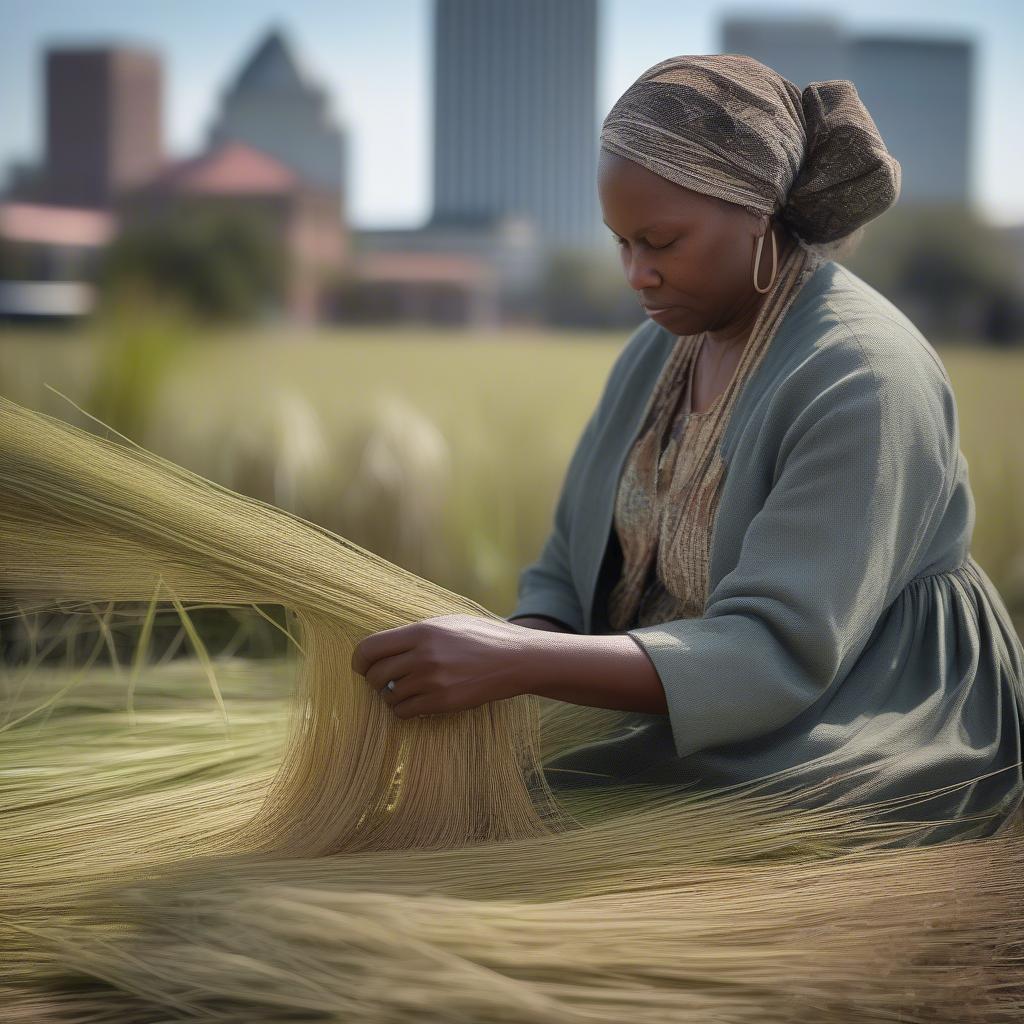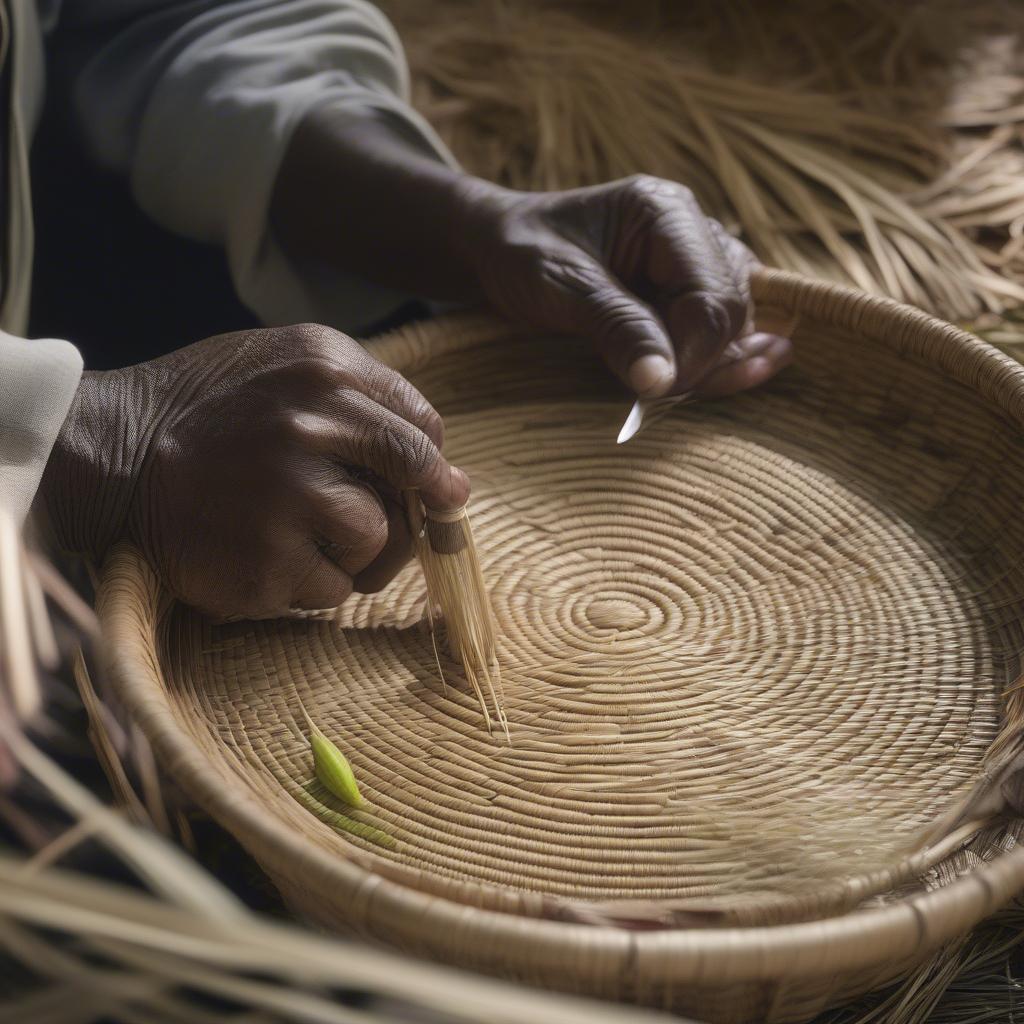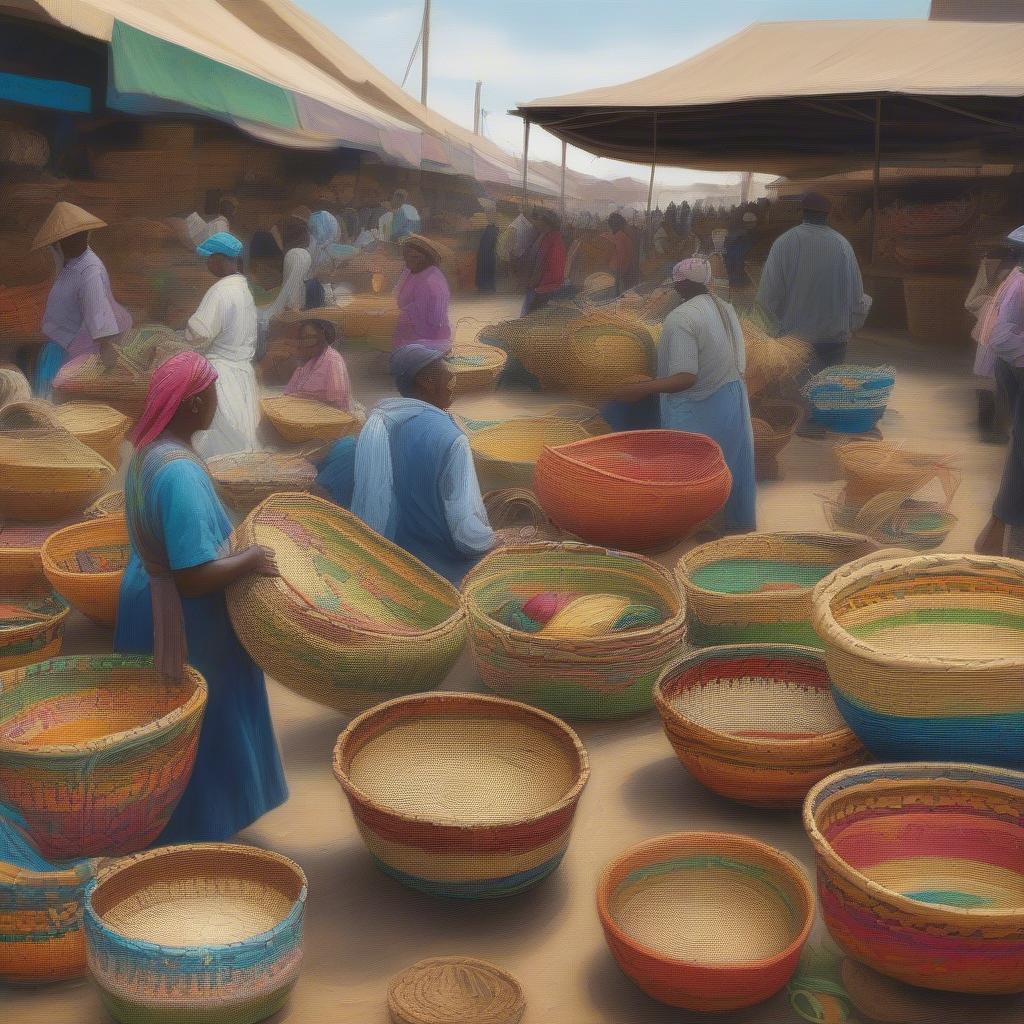Basket Weaving
Charleston Sweetgrass Basket Weaving: A Timeless Gullah Tradition
Charleston Sweetgrass Basket Weaving is a centuries-old art form deeply rooted in the Gullah culture of the South Carolina Lowcountry. These intricate baskets, woven from locally harvested sweetgrass, are more than just beautiful handicrafts; they represent a rich history, a vibrant cultural heritage, and a testament to the resilience and artistry of the Gullah people.  A Gullah woman weaving a sweetgrass basket in Charleston, demonstrating the traditional technique passed down through generations.
A Gullah woman weaving a sweetgrass basket in Charleston, demonstrating the traditional technique passed down through generations.
The History of Charleston Sweetgrass Basket Weaving
The origins of sweetgrass basket weaving can be traced back to West Africa, brought to the Americas by enslaved Africans. This knowledge became a vital skill, allowing them to create essential tools for harvesting rice and other crops. Over time, these utilitarian baskets evolved into intricate works of art, reflecting the unique cultural blend of African traditions and the Lowcountry environment. The coiled bundles of sweetgrass, meticulously stitched together with palmetto strips, represent a tangible link to the past, carrying stories of resilience, adaptation, and cultural preservation.
basket weaving in charleston sc is more than just a craft; it’s a living legacy.
The tradition has been passed down through generations, primarily by women, who have played a crucial role in maintaining and evolving this unique art form. These skilled artisans, known as basket weavers, have ensured the survival of this cultural treasure, adapting and innovating while preserving the core techniques and artistic principles.
Understanding the Art of Sweetgrass Baskets
Sweetgrass baskets are not merely decorative objects; they are functional pieces of art. Their durable construction and intricate designs make them suitable for a variety of purposes, from carrying goods to serving as decorative centerpieces. The process of creating a sweetgrass basket is labor-intensive and requires a deep understanding of the materials and techniques. From harvesting the sweetgrass and preparing the palmetto strips to the intricate coiling and stitching, each step demands patience, skill, and a keen eye for detail.
 Close-up of sweetgrass and palmetto being woven together, showcasing the intricate details of the Charleston sweetgrass basket weaving process.
Close-up of sweetgrass and palmetto being woven together, showcasing the intricate details of the Charleston sweetgrass basket weaving process.
The Significance of Sweetgrass
Sweetgrass itself holds a special significance in Gullah culture. Beyond its practical use, it is believed to possess spiritual properties, symbolizing peace, prosperity, and protection. Its subtle, sweet aroma further enhances its appeal, adding a sensory dimension to the artistry of the baskets.
“Sweetgrass is more than just a material; it’s a connection to our ancestors,” says renowned Gullah basket weaver, Sarah Mae Gadson. “Each strand whispers stories of strength, resilience, and the enduring spirit of our people.”
Identifying Authentic Sweetgrass Baskets
With the increasing popularity of sweetgrass baskets, it’s important to be able to distinguish authentic, handcrafted pieces from mass-produced imitations. Authentic sweetgrass baskets are characterized by their tight, even coils, the use of natural materials, and the subtle variations in color and texture that come from handcrafted artistry.
gullah basket weaving has a distinct style that sets it apart.
Where to Experience Charleston Sweetgrass Basket Weaving
Charleston offers numerous opportunities to experience this vibrant art form firsthand. From visiting the historic Charleston City Market, where generations of basket weavers have displayed their creations, to participating in sweetgrass basket weaving workshop, there are numerous ways to connect with this rich cultural tradition. You can also find beautifully crafted baskets at local galleries and craft shops throughout the Lowcountry.
charleston south carolina basket weaving is a vibrant part of the city’s cultural scene.
 A display of colorful sweetgrass baskets at the Charleston City Market, showcasing the variety of shapes and sizes available.
A display of colorful sweetgrass baskets at the Charleston City Market, showcasing the variety of shapes and sizes available.
“Seeing a basket weaver at work is a truly mesmerizing experience,” shares Dr. Henry Louis Gates Jr., a prominent scholar of African American history and culture. “It’s a powerful reminder of the enduring legacy of African artistry and the importance of preserving cultural traditions.”
Conclusion
Charleston sweetgrass basket weaving is more than just a craft; it’s a living testament to the resilience, creativity, and cultural heritage of the Gullah people. By supporting these talented artisans and appreciating the artistry of their work, we help ensure the continuation of this cherished tradition for generations to come. Explore the world of Charleston sweetgrass basket weaving and discover the beauty and history woven into each unique creation.
FAQs
- What is sweetgrass?
- How long does it take to make a sweetgrass basket?
- How can I tell if a sweetgrass basket is authentic?
- Where can I buy authentic sweetgrass baskets in Charleston?
- Are there any sweetgrass basket weaving classes or workshops available?
- What is the significance of sweetgrass in Gullah culture?
- How do I care for a sweetgrass basket?
See more about gullah basket weaver painting.
When you need assistance, please contact Hotline: +84 388 951 999, address: Hanoi, Vietnam or Tech Avenue, Suite 12, San Francisco, CA 94105, USA. We have a 24/7 customer service team.
